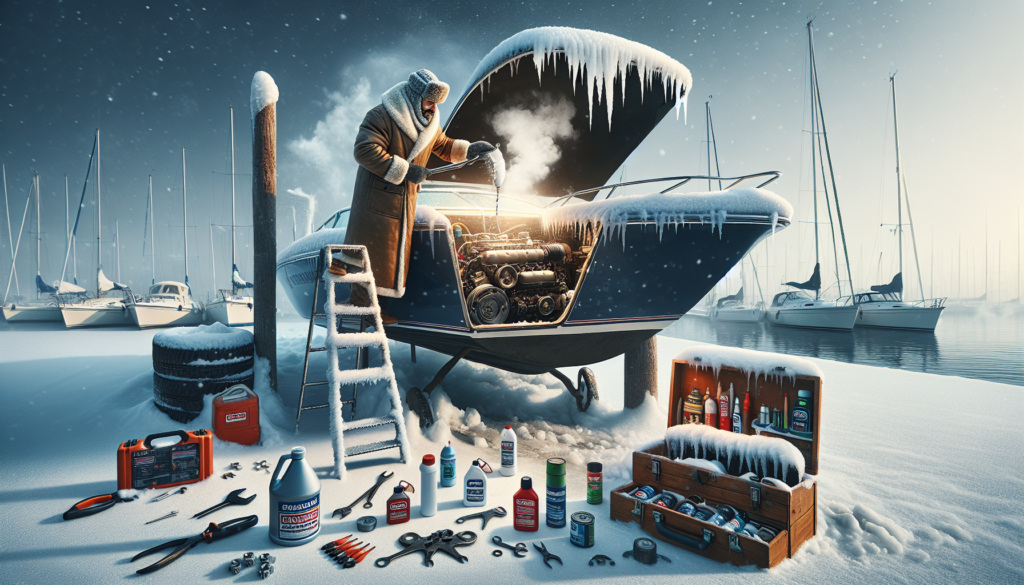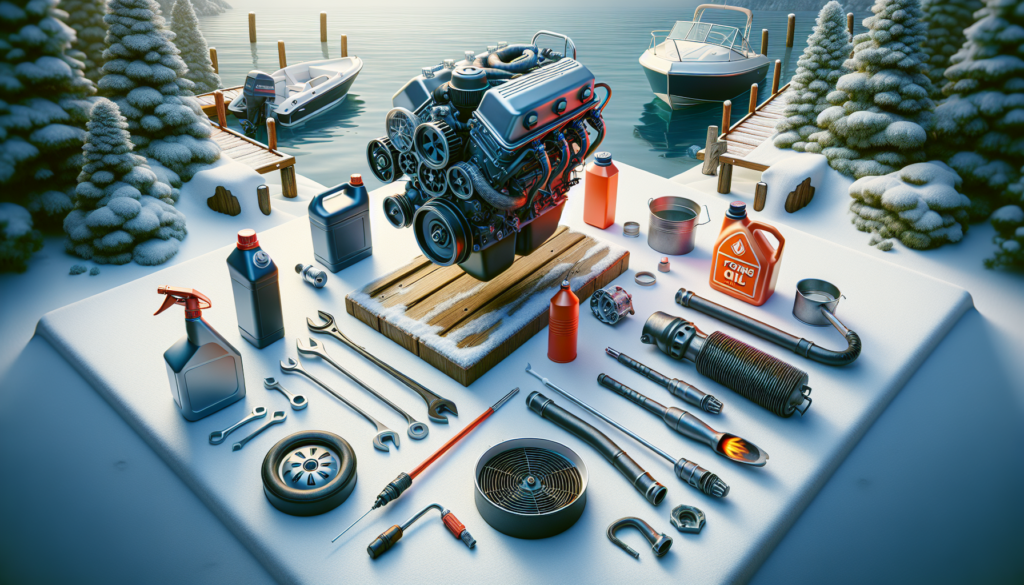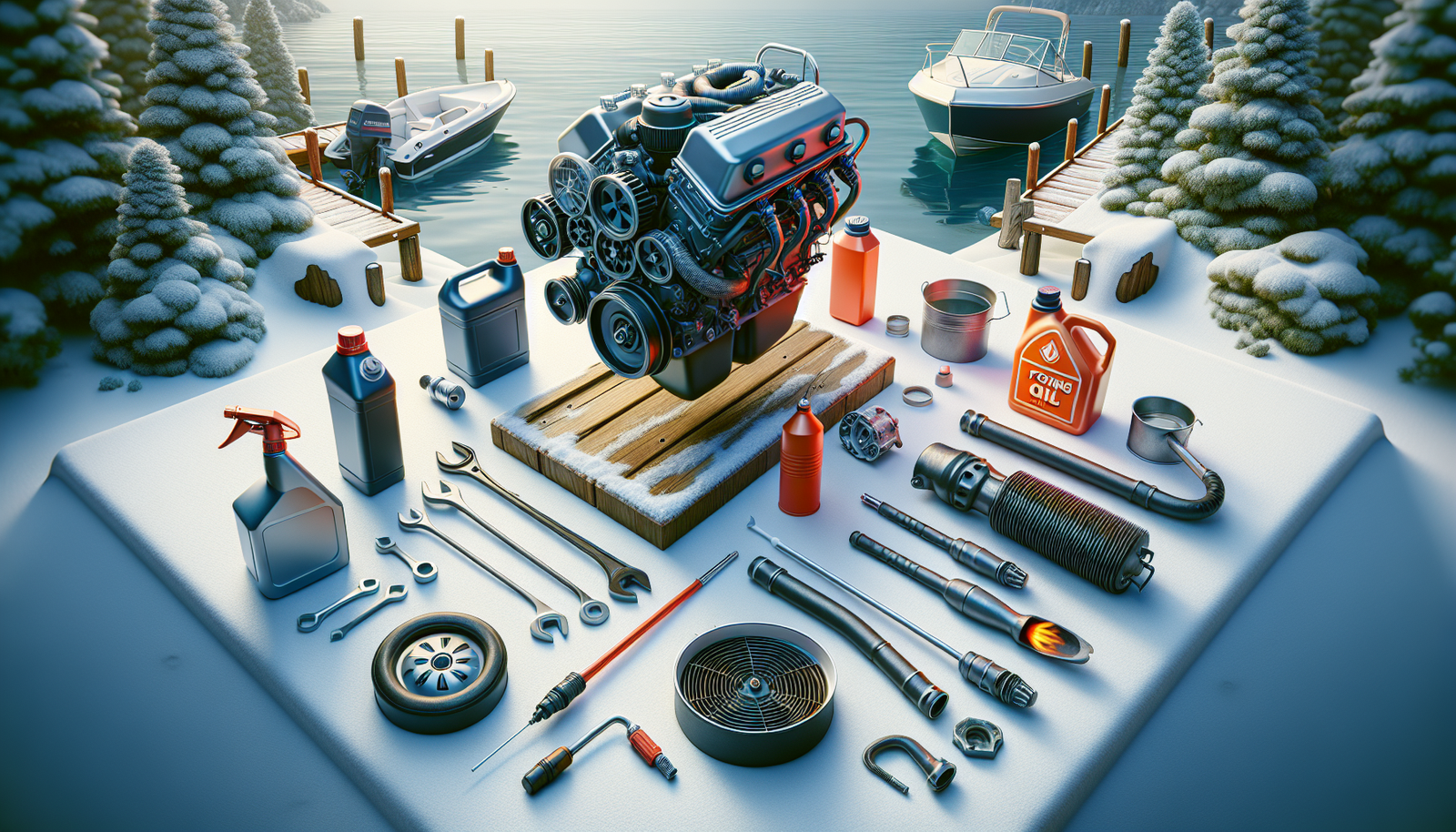Getting ready for a thrilling wintertime adventure on water? You should know how critical it is to properly prepare your boat’s engine for those chilly temperatures. “The Best Boat Engine Winterization Practices for Cold Weather Boating” demystifies this crucial process, teaching you to shield your boat from icy conditions and ensure optimal performance. Expect to gain knowledge on effective preparation, maintenance, and hibernation techniques that are guaranteed to prolong your boat’s life. So, let’s get your boat cold-weather ready!

Understanding the Importance of Boat Engine Winterization
Most boat owners focus on maintaining their vessels in a sea-ready state but often forget about the need for proper winter maintenance. Keeping your boat engine from freezing is a crucial aspect of boat ownership, particularly for those who live in regions known for heavy winters.
Why engine winterization is necessary for boaters
Engine winterization mainly involves taking preventive measures before the winter hits to keep your boat from freezing. The cold weather can adversely affect your engine, causing it to freeze and suffer significant damage. Winterization is necessary to keep your boat’s engine running smoothly when it’s time to get back to the water.
How cold weather impacts marine engines
Marine engines are primarily made of metal; cold weather can cause them to contract, leading to potential cracks and breakage. Cold temperatures may also cause the fuel within the engine to gel up or the oil to become thick, affecting the performance. Not to mention, any water left inside the engine could freeze, expand, and result in damage.
The potential consequence of not winterizing a boat engine
Failure to undertake a proper winterization process can lead to extensive (and often expensive) damage in the engine. In the worst-case scenario, an engine that does not get winterized may need to be entirely replaced, which can easily run into the thousands of dollars.
Choosing the Right Winterization Products
It’s crucial to choose the right winterization products to ensure your boat engine is safe during the winter months. These products will help protect the engine from freezing, corrosion, and other cold-related damage.
Types of antifreeze for boat engines
There are different types of antifreeze available in the market for boat engines—ethanol-based, propylene glycol, and ethylene glycol. Ethylene glycol based antifreeze is the most commonly used due to its high freeze protection level, but it’s also toxic and requires proper disposal. Propylene glycol, on the other hand, is less toxic but also offers protection against freezing and rust.
Exploring different engine fogging oils
Engine fogging oils are meant to cover and protect the engine’s internal components during idle times, preventing any rust or corrosion that might occur due to moisture. You often spray them directly into the engine’s carburetor while it’s running, ensuring that it reaches all parts of the engine.
The role of fuel stabilizers in winterization
Fuel stabilizers play a significant role in the winterization process. They can prevent the fuel from separating or going stale during the off-season, reducing oxidation and corrosion in the fuel system. It also stops buildup in the carburetor and fuel lines.
The Boat Engine Winterization Process
Winterizing your boat’s engine does require some effort, but it’s entirely doable with the right materials and know-how. Here’s how you can get started.
Step by step guide to winterize a boat engine
Start by running the engine to warm it up and then change the engine oil and filter. Drain any remaining water from the engine. Next, add a stabilized fuel to the tank and burn it into the fuel system. Fill the cooling system with antifreeze and apply fogging oil to the engine’s cylinders. Lastly, remove the battery, clean it, and store it safely.
When to winterize your marine engine
The best time to winterize your boat engine is in the autumn, before the first frost hits. This will ensure that your engine is protected before the cold weather begins. Do not wait for extreme temperature drops or frozen lakes before starting the winterization process.
Common mistakes to avoid during the winterization process
A common mistake boat owners make during winterization is not fogging the engine. Fogging is critical to preventing rust and corrosion. Another mistake is not using fuel stabilizer, leading to fuel degradation. It’s also crucial to thoroughly drain all water from the engine to avoid freezing and cracking.
Fuel System Winterization
Winterizing your boat’s fuel system is crucial, as leaving untreated fuel in your tank can cause several problems.
How to prevent fuel contamination during winter
First, fill your fuel tank to prevent condensation from forming inside. Then, add a fuel stabilizer to keep the fuel from breaking down or oxidizing.
Importance of emptying the fuel tank for winter
In the case of ethanol-based fuels, it’s better to empty the tank as ethanol attracts water, which can lead to phase separation. Nonethanol fuel doesn’t have this problem, so storing it full with a stabilizer is better.
Usage of fuel stabilizer during winter
A fuel stabilizer prevents your fuel from breaking down during the storage period. Once added to the tank, run the engine for a few minutes to circulate the stabilizer through the fuel system.

Winterizing the Cooling System
The cooling system is crucial to prevent your boat engine from overheating. Here’s how to winterize it.
Importance of checking for leaks in the cooling system
First, check the system for leaks to ensure it’s operating efficiently. Small leaks can cause the engine’s freeze plugs to pop out, causing severe engine damage.
How to use antifreeze in the cooling system
To use antifreeze, first, ensure all water is drained from the system, then add antifreeze according to the manufacturer’s instructions. Do not mix different types of antifreeze, stick to one type.
Ensuring proper circulation of the antifreeze in the system
Run the engine while adding antifreeze until it starts coming out of the exhaust. This ensures it circulates through the entire system. Shut off the engine immediately to prevent overheating.
Handling the Boat’s Battery During Winterization
The boat’s battery also needs care during the winterization process to ensure it performs as expected when spring comes.
The correct way to store a boat’s battery in the winter
Remove the battery from the boat and store it in a cool, dry place where it won’t freeze. Keep it off the concrete floor as it can drain the battery.
Maintaining battery charge during the cold months
Use a trickle charger or a battery tender to keep the battery fully charged during the winter. It’s also essential to check the battery’s water level to prevent it from drying out.
Winter care for different types of boat batteries
Whether your boat has a wet cell, gel cell, or AGM battery, all types need to be kept clean and fully charged during winter storage. However, each type may have specific maintenance needs, so follow the manufacturer’s instructions.

Winterizing the Boat’s Lubrication System
The lubrication system also needs winterization to function correctly come springtime.
The role of the lubrication system in a boat engine
The lubrication system protects the engine against premature wear and tear. It reduces friction between moving parts and helps cool the engine components.
How cold weather affects the lubrication system
Cold weather can make the engine oil thicker, causing it to flow less freely. This means that it may not reach all the critical parts of the engine, resulting in increased friction and possible engine damage.
Steps to winterize the lubrication system
Start by draining the old oil while the engine is warm, then replace it with fresh, winter-grade oil. Make sure also to replace the oil filter.
Additional Boat Equipment Winterization
Winterizing your boat’s additional equipment can extend its life and ensure everything is in good working order when boating season returns.
Winter care for boat plumbing systems
Antifreeze should be run through all pipes, pumps, and water systems. Be sure to drain all water from these systems before storing them for winter to avoid any freezing and potential bursting of pipes.
How to protect boat electronics during winter
For electronics, it’s best to remove them entirely and store them in a dry, warm environment for the winter. If this is not possible, cover them to prevent exposure to the elements.
Essential winterization practices for boat hull and interior
The exterior should be thoroughly cleaned, then waxed or sealed to protect it from ice and snow. Inside, clean and dry all surfaces, remove any perishables, and leave cabinets and lockers open to encourage air circulation and prevent mildew growth.

Investing in Professional Boat Engine Winterization Services
While DIY winterization is possible, sometimes it can be worth hiring professionals. Here’s how to know when to do so and what to expect.
When to consider professional winterization services
If you are unsure, lack the necessary tools, or have a complex, high-end boat, it may be in your best interest to hire a professional. They will know exactly what to do and can often provide additional helpful services such as shrink-wrapping your boat.
How to select a reliable winterization service
Look for professional services with good reviews and a proven track record. Also, consider if they offer guarantees on their work and ask what specific services their winterization process includes.
Comparing costs of DIY vs professional winterization
While professional winterization may have a higher upfront cost, remember that it could save you significant money in the long run by preventing severe damages due to improper winterization. Compare the cost of hiring a professional with the potential time, effort, and expense of doing it yourself.
Post-Winter Boat Engine Reactivation
After winter, spring will come, and with it, the boating season. Here’s how to reactivate your boat after winterization.
What to check when de-winterizing your boat engine
Check the boat thoroughly before the first launch. Replace the battery, run the engine, and look for potential leaks in the fuel system. Make sure no belts or engines’ hoses are loose or worn down.
Preparing the boat’s systems for spring
Replace any fluids that were drained during winterization, such as the engine coolant, oil, and so on. Test all systems, including the electronics, plumbing, and cooling systems, to ensure they are functioning correctly.
Tips for first launch after winterization
On your first launch, be gentle. Let the engine warm up slowly and keep a careful watch for oil pressure and temperature. Run the engine in neutral for a while, and check again for leaks. Being vigilant during the first launch can prevent potential issues for the rest of the boating season.

